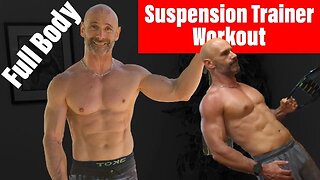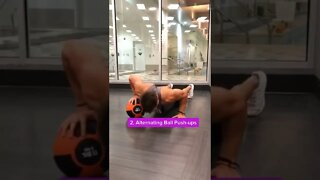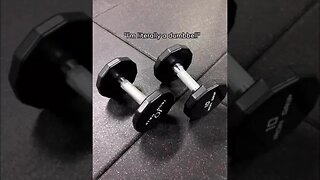Functional Training for Everyday Fitness
Functional training is a fitness approach that focuses on exercises designed to mimic real-life movements and improve everyday activities. Unlike traditional bodybuilding workouts that isolate specific muscles, functional training involves compound exercises that engage multiple muscle groups, enhancing overall strength, balance, coordination, and flexibility. Here's a detailed description of functional training and its benefits for everyday fitness.
What is Functional Training?
Functional training involves exercises that simulate common movements and tasks encountered in daily life, such as lifting, bending, pushing, pulling, and twisting. The primary goal is to improve overall body mechanics, making it easier to perform day-to-day activities and reduce the risk of injury.
Benefits of Functional Training
Enhanced Strength and Coordination: Functional exercises engage multiple muscle groups, promoting better coordination and strength. This leads to improved performance in sports, work tasks, and daily activities.
Improved Balance and Stability: Functional training often includes exercises that challenge your balance, helping to strengthen stabilizer muscles and reduce the risk of falls.
Reduced Risk of Injury: By working on movement patterns and building core strength, functional training helps prevent common injuries related to poor posture, muscle imbalances, and overuse.
Greater Flexibility and Mobility: Functional exercises encourage a full range of motion, promoting flexibility and joint mobility.
Key Components of Functional Training
Compound Movements: Exercises that engage multiple muscle groups at once, such as squats, lunges, push-ups, and deadlifts. These movements build overall strength and mimic daily activities.
Core Strength: A strong core is essential for functional fitness. Exercises like planks, Russian twists, and mountain climbers help build core strength and stability.
Balance and Stability: Exercises that challenge balance, such as single-leg deadlifts or stability ball work, help improve coordination and stability.
Flexibility and Mobility: Incorporating stretching and mobility exercises into your routine ensures that your muscles and joints maintain a healthy range of motion.
Functional Training Exercises
Here are some common functional training exercises that can be incorporated into a fitness routine:
Squats: A compound movement that targets the legs and glutes while engaging the core. It's essential for activities like sitting, standing, and lifting.
Lunges: A lower-body exercise that improves balance and strength, useful for walking and climbing stairs.
Push-Ups: A classic upper-body exercise that works the chest, shoulders, and triceps, beneficial for pushing and lifting tasks.
Deadlifts: An exercise that strengthens the back, legs, and core, simulating lifting heavy objects.
Planks: A core-strengthening exercise that promotes stability and engages the entire body.
Medicine Ball Throws: These exercises involve tossing a medicine ball, simulating throwing and rotational movements.
Incorporating Functional Training into Your Fitness Routine
Warm-Up and Cool-Down: Always start with a warm-up to prepare your body for exercise and end with a cool-down to reduce muscle soreness.
Balanced Routine: Combine functional exercises with other forms of exercise, like cardiovascular workouts, to achieve a well-rounded fitness plan.
Progressive Intensity: Gradually increase the intensity and difficulty of your exercises to continue building strength and endurance.
Professional Guidance: If you're new to functional training, consider working with a fitness trainer to ensure proper form and technique.
Functional training is a versatile and effective approach to fitness that enhances your ability to perform everyday tasks while improving overall health and well-being. By incorporating these exercises into your routine, you'll build functional strength, reduce the risk of injury, and enjoy a more active lifestyle.
-
 0:42
0:42
Lee_Tal
1 year agoFunctional training workout 💪🏼🥵
2 -
 0:43
0:43
Pumpedpowerhouses
4 months agoEngage Your Strength: Functional and Core Workout
240 -
 5:49
5:49
Fit and 50
5 years agoFull Body Suspension Trainer Workout!
32 -
 1:00
1:00
TheGreatAwakeningwithAlex
9 months agoHigh Intensity Functional Workout‼️💪🏼🥊
8 -
 0:11
0:11
Fitness Mania
1 year agoFitness goals | Gym | workout
22 -
 0:07
0:07
Fitness Mania
1 year agoFitness goals | Gym | workout
6 -
 23:17
23:17
Hubertmanalo08
1 year agoHealth and Fitness _ 20 MIN FULL BODY WORKOUT
43 -
 0:15
0:15
ASJSportTraining
1 year agoUPPER BODY WORKOUT ROUTINE 🔥
38 -
 0:05
0:05
Fitness Mania
1 year agoFitness goals | Gym | workout
27 -
 0:06
0:06
Fitness Mania
1 year agoFitness goals | Gym | workout
84